Menstruation – a period that is counted from the 1st day of the onset of menstrual flow until the 1st day of the next one. As a rule, the menstrual cycle has its own specific duration for each woman and it is repeated monthly, and the amount of menstrual blood released does not change.
In accordance with its course, an egg is formed and matures in a woman’s body - during reproductive age, cyclic changes are a kind of preparation for subsequent pregnancy.
It is without menstruation that the prolongation of the human race is impossible - in the life of every woman they play the following important role:
- Regulates her reproductive functions and affects her health, acting as a certain signal of disturbances in its work.
- Menstruation also determines a woman’s level of well-being and helps get rid of all the negative stagnation in her body.
- Promotes natural renewal of blood composition and directly affects its appearance.
But the most important function is preparing the body for future conception and pregnancy.
The menstrual cycle is normal
- Doctors note that the normal menstrual cycle lasts from 21 to 35 days - this is on average plus/minus a week, based on the average of 28 calendar days.
- The duration of menstruation itself is individual and varies from 2 days to a week, with a loss of blood volume of no more than 80 milliliters. But as statistics show, the menstrual cycle and menstruation itself are longer in time for women in the northern regions, and shorter for women living in the southern zones.
- In the cycle itself, its regularity is important - when a woman’s menstrual cycle lasts within 35-36 days, this is the norm, but when it lasts 21-22 days, this is already a pathology.
But as doctors note, a woman can have 2 menstruation in one cycle, and this is also considered a deviation from the norm in certain cases, and the norm in others.
Deviations in the menstrual cycle
If menstrual flow is delayed, this may be a sign of either pregnancy or indicate certain deviations in the very cyclicity of menstrual flow.
Among the most common deviations, doctors identify the following:
- Amenorrhea is the absence of menstruation. Doctors do not immediately diagnose a woman with such a diagnosis - I diagnose amenorrhea after six months from the date of the last menstruation. Lack of menstruation can be caused by hormonal imbalances and disruptions caused by malfunctioning of the ovaries, pituitary gland or thyroid gland.
- Algomenorrhea or painful menstruation - according to statistics, almost every 3 women face this problem. Menstruation is accompanied by severe attacks of pain and cramps, which are observed 1-2 days before the start of menstruation or in the first days. The pain is nagging in nature, aching, localized in the lower abdomen, radiating to the lower back and continues to bother the patient for 1 to 3 days. After childbirth, painful menstruation stops.
- Menorrhagia - or, as doctors call them, heavy menstruation, lasting more than a week and in which blood loss is 80 milliliters or more. If you suspect this pathology, check the number of pads or tampons you change per day. If you change more than 8-10 and the menstruation itself lasts more than a week, you should visit a doctor.
Causes
The reasons that can provoke a delay or absence of menstruation that are not related to pregnancy can be very different.
Among the most common reasons, doctors name the following root causes:
- Stressful situations and experienced negative psycho-emotional experiences.
- A sharp decrease in body weight when following an incorrectly selected diet.
- A cold or other infectious nature of the origin of the disease and pathology affecting, including the uterine cavity and appendages.
- The functional nature of the origin of cysts, localized in the ovaries - most often, after a delay, a woman experiences long and heavy menstruation.
- Disorder of the endocrine system and other organs caused by endocrine disorders - hypofunction of the thyroid gland and polycystic ovary syndrome, increased levels of the hormone prolactin.
- Damage to inflammation or trauma to the endometrium of the uterine cavity , for example, after installation of an IUD or abortion.
- Also, premature wear and exhaustion of the ovaries , accompanied by symptoms and the onset of early menopause, can also provoke a delay in menstruation.
Menstruation twice a month
With a regular cycle lasting from 28 to 33 days, a woman has nothing to worry about, but in the practice of gynecologists there are also cases when menstruation occurs twice. They can be provoked by both external and internal reasons.
Doctors identify the following external reasons for the appearance of a second menstruation in one cycle:
- The use of contraceptive hormonal drugs as contraception - they can provoke a restructuring of the entire menstrual cycle. If, after stopping taking contraceptives, the cycle does not return to normal, you should consult a doctor and undergo an examination, and choose other means of contraception. If emergency contraception (Postinor) is used.
- A failure of the hormonal background in a woman’s body is precisely the level of female hormones that determines the cyclicity of the normal menstrual cycle. Changes in hormonal levels can be caused by pregnancy, childbirth, or abortion.
- Adolescence, when the menstrual cycle is just beginning to form. If a girl is less than 2 years old from her first menstrual period, then there is no need to worry too much. During this time, the menstrual cycle will normalize and return to its usual course.
- The onset of menopause. When a woman reaches menopause, her hormonal levels change, which also affects the frequency of her cycle.
- Installation of an intrauterine device as a means of contraception is precisely what can provoke the onset of 2 menstruation in one menstrual cycle.
- Severe nervous experience and a stressful situation , as well as sudden weight loss or a change in climatic conditions of residence.
What can a 2 month old baby do?
Just a few decades ago, parents thought about what a child could do at 2 months. Such early complementary feeding was considered the norm. Nowadays, pediatricians do not recommend and even prohibit introducing a baby to adult food so early.
- Myths about the need for complementary feeding at 2 months
- Why 30 years ago complementary foods were introduced from infancy
- Doctors' opinion: why complementary feeding is harmful at 2 months
- What can small children at 2 months old
Myths about the need for complementary feeding at 2 months
Myth one: “At 2-3 months, it is easier for the body to adapt to adult food.”
It is cultivated by some mothers, actively defending their opinions on forums. In their opinion, at this age adaptation is easier than at six months, and it is worth giving the baby to eat and drink adult food.
Doctors think differently. Early complementary feeding is fraught with the appearance of allergies. If a child starts trying cereals containing gluten, he or she may become intolerant. If you supplement your baby with cow's milk, you can provoke intolerance to lactose and milk protein. In addition, the fragile digestive system is unable to cope with adult food. As a result, digestive disorders, regurgitation, vomiting, and serious illnesses may develop. Such as gastritis.
Myth two: “They used to feed them early, but the children grew up healthy.”
The consequences of early complementary feeding are not always immediately noticeable. If no rash or loose stool appears on the same day, this does not mean that everything went without a trace. Diseases of the gastrointestinal tract can appear many years later. These diseases are very common even among young people. Perhaps they are associated with the hasty introduction of adult food.
Answering the question whether a 2-month-old child can have adult food, doctors answer unequivocally: “No.” Even at 4-6 months, it is better to discuss suitable foods for complementary feeding with your pediatrician.
Why 30 years ago complementary foods were introduced from infancy
Already at 2-3 months, children 20-30 years ago could be offered apple juice, yolk, apple. This happened for several reasons.
With insufficient lactation, mothers had to make up for the lack of nutrients in the child’s body with other products. Even pediatricians could advise early complementary feeding if the baby had low hemoglobin.
There were practically no high-quality mixtures. Parents had to somehow supplement the baby's feeding, using animal milk. These formulas are now available, close to the composition of breast milk and saturated with various beneficial substances. Among them are prebiotics, vitamins, macro- and microelements.
Awareness about improving lactation was low. Now there are breastfeeding specialists who help mothers establish lactation even when difficulties arise. There are various breast shields and other ways to feed a baby even with abnormal breast structure or nipple injury.
Doctors' opinion: why complementary feeding is harmful at 2 months
Pediatricians support the WHO position on the timing of introducing adult food. For infants this is six months, for children fed formula - 4.5 - 5 months.
Only at this age the child’s body is ready for complementary feeding. At 2 months, the digestive system cannot absorb protein other than that contained in formula and breast milk. It still doesn't have enough enzymes. It is especially difficult for a child's body to digest the milk protein casein, which is found in cow's milk.
Problems also arise with the absorption of carbohydrates. They are not broken down enough, so the porridge eaten by the baby will not benefit him.
Useful tips for mothers: NUTRITION AND NOT ONLY BY MONTH
At 2 months, the baby’s ejection reflex is still highly developed. To prevent him from choking on a foreign object, up to 4-6 months he pushes out foreign objects and food that gets into his mouth. This is another sign that it is too early to introduce complementary foods at this age. When the reflex passes, you can update the child’s menu.
Abroad, pediatric doctors are of the opinion that early complementary feeding provokes excess weight. By applying to the breast or bottle, the baby himself assesses when he has enough food. When spoon feeding, you can easily overfeed the baby. This can lead to increased colic and disturbances in the gastrointestinal tract. There is also a risk of developing celiac disease or diabetes later in life.
With early complementary feeding, not only the risk of allergies increases, but also eczema.
If a baby at this age eats food that is thicker than formula or breast milk, the load on the pancreas and liver will increase significantly. Although breast milk is quite fatty, it is easily digested. This is explained by the special enzymes it contains.
When complementary foods appear, the baby is less interested in the mother's breast, which reduces lactation.
What can small children at 2 months old
It is best to limit yourself to breast milk or formula. If a nursing mother wants to please her baby with some healthy fruit, it is better to eat it herself. This way, the baby will receive all the beneficial substances from mother’s milk without the risk of rashes and other unpleasant consequences.
If your child lacks nutrients, you need to adjust your menu. A nursing mother should eat well and vary. The diet must include fruits, vegetables, natural juices, meat and fish.
Any table with recommendations will indicate that 2 months is too early an age to introduce complementary foods. It’s better to wait a few months until the new foods are actually beneficial for the baby.
- about the author
- Recent publications
Arina Nagovitsyna
author of the publication (site editor)
JOURNALIST Higher education: Faculty of Journalism and Mass Communications
Arina Nagovitsyna recently published (see all)
- What can a child at 3 months - 09/12/2019
- What a 2 month old baby can do – 09/11/2019
- Which formula to choose when mixed feeding - 09/10/2019
Pathologies that cause bleeding
Menstruation occurring twice during one menstrual cycle may be a consequence of developing infectious diseases, which provoke bleeding.
Most often, infections affecting the pelvic organs can provoke the onset of the second menstruation in a cycle and uterine bleeding. Among other things, toxin poisoning and benign neoplasms can also provoke bleeding.
Inflammation of the uterus
It is this diagnosis of inflammation of the uterine cavity that can provoke internal bleeding between menstruation - in this case, a woman may think that she has her second period.
This in turn interferes with the normal production of hormones in the body and this can cause the onset of repeated menstruation.
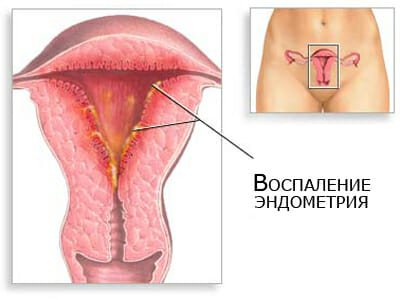
Erosion
Erosive damage to the cavity and cervix can cause the development of an inflammatory disease that affects the woman’s reproductive system.
Among other things, erosion can destroy the network of small vessels that penetrate the mucous membrane of the cavity and cervix and thus provoke bleeding between menstruation.
Uterine fibroids
A tumor of benign origin - fibroids, which affects muscle fibers and tissues in the uterine cavity, can also provoke bleeding between menstruation.
Uterine fibroids can be very different in size and provoke repeated bleeding between periods - many women can often mistakenly mistake them for menstruation between periods.
It is impossible to independently identify the root cause and diagnose uterine fibroids - for this, the patient undergoes laboratory tests and undergoes an ultrasound examination.
Most often, doctors prescribe a medicinal course of treatment, but in particularly advanced cases, surgical intervention by surgeons cannot be avoided.
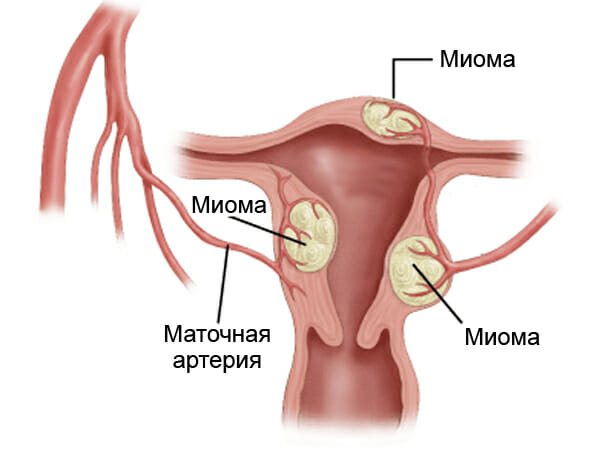
Endometrial hyperplasia
Physicians call the pathological growth of tissue lining the lining of the uterine cavity endometrial hyperplasia - there can be many reasons for such a pathological process. These include hormonal imbalance and diseases affecting the reproductive system, pathologies of the endocrine glands and previous abortion or medical curettage.
In this case, the endometrium thickens several times and the structure of the vascular network is disrupted, thereby provoking internal uterine bleeding.
This pathological condition is characterized by the fact that bleeding can begin both before and after menstruation, and in this case the volume of discharge will be 2-3 times greater than usual.
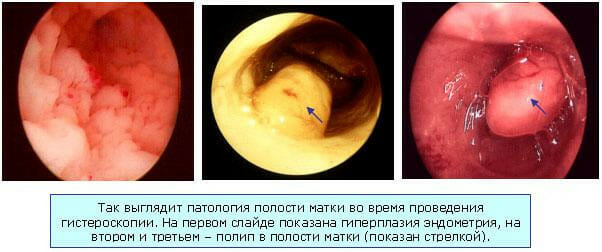
Polyps
Polyps developing in the cavity or cervix will affect and damage the vascular system, the very structure of the entire mucous membrane of the uterus.
Only medicinal or surgical removal is indicated - as doctors note, polyps affecting the endometrium are a type of focal form of hyperplasia.
Miscarriage
If pregnancy occurs after fertilization, but despite all this, the fertilized egg could not, for one reason or another, attach to the endometrium, the body regards it as a foreign body and gets rid of it.
In this case, the rejection process itself is accompanied by uterine bleeding, which a woman may perceive as repeated menstrual bleeding and is not aware of the failure of her pregnancy.
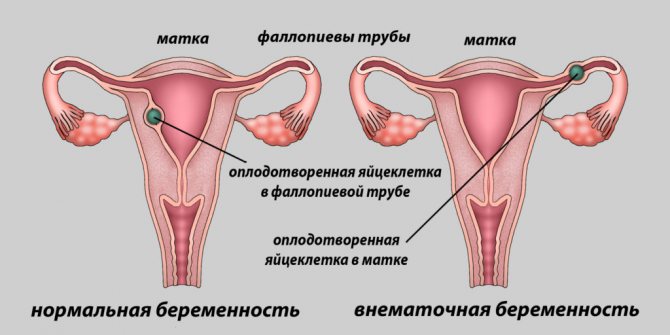
Ectopic pregnancy
Very often, gynecologists in their practice are faced with such a dangerous pathology as an ectopic pregnancy, in which the fertilized egg will be attached not in the uterine cavity, but in the fallopian tube. This pathological process will be accompanied by bleeding between menstruation.
In its growth, the fetus can provoke rupture of the fallopian tube and death - to prevent this pathological process, it is worth consulting a doctor in a timely manner and performing a medical abortion.
Malignant tumors
The appearance of scanty discharge on underwear between menstruation may be a sign and consequence of the development of malignant neoplasms in the uterine cavity and reproductive system of a woman.
As gynecologists note - malignant neoplasms, cancer can provoke the onset of 2-3 bleeding between menstruation.
Most often, discharge during the development of malignant oncology is brown and watery, and appears regardless of the date of menstruation.
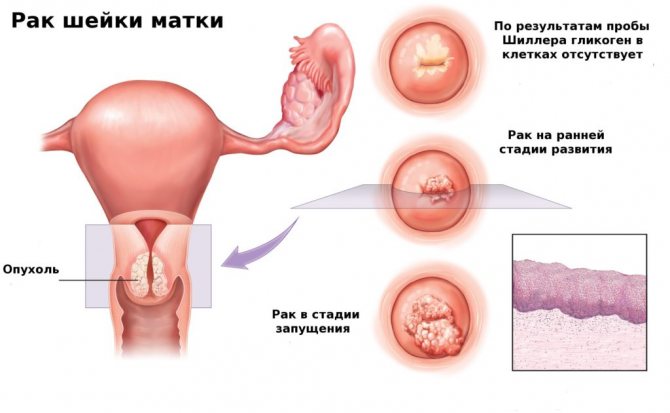
Bleeding disorder
Blood diseases and a low level of blood clotting can provoke bleeding between menstruation - it is the violation of blood hemostasis that leads to repeated and more intense, prolonged uterine bleeding.
A pathological disease, incoagulability of blood, can develop due to liver disease or a lack of iron in the body and a hereditary form of hemophilia and other pathological processes.
Nutrition for a two month old baby
For good health and full development of the baby, you need to try to breastfeed him. Breast milk is well digestible and rich in all micronutrients and vitamins necessary for growth and development. Breast milk also contains antibodies - immunocompetent cells that enhance immunity and protect the baby from various pathogenic bacteria.
The baby’s stomach is sensitive to the quality of food, so children who are bottle-fed need to choose formulas adapted to their body and as similar in composition as breast milk. To choose the right baby food, it is better to consult a pediatrician.
In the second month of life, the baby's digestive organs improve, so children may be bothered by intestinal colic. Special medications (as prescribed by a doctor), folk remedies (dill water, warm diaper), physical exercise and dietary compliance by the nursing mother will help reduce their manifestations.
It is recommended to feed a two-month-old baby every 3-3.5 hours (including at night). According to most pediatricians, breastfed children should be given breastfeeding on demand. To avoid overeating and frequent regurgitation, you should still adhere to a certain feeding regimen, for example, with an interval of 2-2.5 hours.
In order for a child to gain weight correctly, develop and grow, he must eat the daily dose required for his age - ⅕ of his weight. On average it is 700-900 mg per day.
The child distributes the required amount independently in a chaotic manner. For example, during one feeding he can eat 25 mg, during another - 130. That is why control weighing (determining the child’s weight before and after eating) does not provide objective information. To find out how much a baby actually eats per day, you need to weigh him at each feeding. However, this is a rather inconvenient and expensive method (buying scales).
There is a more objective and handy method. This is the determination of the number of daily urinations using disposable diapers. In this case, diapers must be abandoned. If a child urinates 10-12 times a day, this is normal and he does not suffer from milk deficiency. If the number of urinations is less, you should consult a doctor who will determine the cause of underweight and insufficient urination, and also provide recommendations regarding the organization of the feeding process.

When is it normal to have periods twice a month?
In some cases, according to doctors, the onset of menstrual flow in a woman 2 or more times a month is not considered a pathology, but a normal, natural process.
Doctors call these reasons:
- A course of taking hormonal contraceptives - the onset of repeated menstruation is a normal reaction of the body to changes in the level of hormones in the blood. Such disorders most often bother a woman for no more than 2-3 cycles, when the hormonal levels stabilize. If there are no positive changes, you should choose another means of contraception.
- An inflammatory process that affects the uterine cavity or the ovaries - it is this pathological process that provokes an abnormal decrease in progesterone and, as a result, a failure in the growth of the endometrium. If it is rejected, spotting will appear between menstruation.
- Hormonal imbalance caused by labor or abortion. Among other things, puberty in a teenage girl can also provoke hormonal changes and the appearance of 2 or more spottings between menstruation. This process will last until normalization and stable hormonal levels and the course of menstruation are established.
- The period of menopause and the premenstrual period is precisely the natural aging of the body and the decline of reproductive functions; changes in hormonal levels can also provoke the appearance of 2 or more bleedings between menstruation.
- Attachment of the fertilized egg to the wall of the uterine cavity, its implantation into the mucous layer - in this case, slight bleeding between periods may also occur.
- Installation of an intrauterine device is also the cause of bleeding between menstruation, and in most cases everything returns to normal within 2-3 cycles.
In addition to natural processes, the causes of bleeding between menstruation may include greater physical activity and emotional distress, stress.
Normal menstrual cycle
A girl's puberty occurs at 11–14 years of age, then (at approximately 18–20 years of age) the reproductive period begins, which lasts until menopause at 45–55 years of age. Menstruation manifests itself in the form of bleeding for 3–7 days once every 1 month.
The monthly cycle normally begins on the first day of discharge, when an unfertilized egg with separated endometrium leaves the uterine cavity along with blood. On the first and last day a slight spotting is possible, on the remaining days the discharge is more abundant.
Every day a woman loses 20–50 grams of blood, which is bright scarlet in color and has a specific odor. Normally, menstruation passes without pain and ends within a week.
When should you see a doctor?
When to sound the alarm and immediately contact a gynecologist:
- First of all, take into account the color of the discharge itself, taking into account the day of the cycle - at the very beginning they have purple shades, and towards the end - brown.
- If your periods return between periods and they are bright scarlet, you should immediately visit a gynecologist. In this case, there is a high probability of uterine bleeding - it will be accompanied not only by copious scarlet discharge, but also by nagging pain localized in the area of the uterus and appendages.
- When there is uterine bleeding, which appears almost immediately after menstruation and is accompanied by contractions, pulsating pain, a feeling of fullness , an ambulance is needed immediately. This indicates an ectopic pregnancy.
The meaning of emotional state
Each woman should understand that frequent bleeding between menstruation can also be provoked by negative emotional states.
The thing is that sharp emotional experiences and stressful situations can provoke bloody discharge between menstruation.
Among other things, long travel and changes in climatic zones and time zones can also cause a pathological process. Therefore, it is important to take into account the following tips and recommendations:
- Minimize or eliminate any shocks.
- control the intake of medications and drugs.
- Monitor your hormone levels and general hormonal status through regular testing.
This will minimize negative consequences.
Hormonal disbalance
Hormonal changes control processes in the female body. Any tissue transformations, restructuring or rejection occur only after a change in the hormonal ratio, the appearance of new hormones that stimulate certain processes within the body. When you get your period twice in one month, the cause is often a hormonal imbalance (natural or medicinal). This condition in the female body can develop in several cases:
- Menopause (accompanied by changes in hormonal levels), the result is that during menopause more frequent bleeding occurs. Menstruation may occur a week after menstruation.
- Adolescence is the time when menstruation begins and is also accompanied by hormonal changes. Menstrual bleeding may appear 10 days after the previous one.
- Taking hormonal medications: oral contraceptives. Gynecologists consider it acceptable to have irregular menstrual cycles in the first three months of taking hormonal contraception. If the violation continues, the period ends and resumes after 3 days, then the drug used must be replaced. Properly selected hormonal contraceptives can normalize the menstrual cycle.
It is important how exactly the second menstruation occurs. If it is weak and spotting, such a violation does not require urgent correction. If both times the bleeding is profuse, this pathology requires prompt treatment, since it leads to the formation of anemia and general weakness. Timely treatment is necessary and a solution to the question “why did you get your period twice a month?”
Actions for repeated menstruation
First of all, you should consult a doctor and undergo laboratory and hardware examinations to establish the root cause of the pathological process.
Most often, doctors carry out diagnostics not only by performing laboratory tests on hormone levels, but also by conducting an examination in a gynecological chair, ultrasound and MRI. Based on the results obtained, he prescribes treatment, in combination with consultation with a psychologist and other highly specialized specialists.
In addition, for her part, a woman can take a number of measures:
- Maintain and study a personal calendar for the course of menstruation - sometimes the date of the onset of menstruation can be shifted due to an abortion or a cold. But if the cycle duration is less than 21 days, this is considered a pathology.
- If a woman is not protected, menstruation may begin prematurely due to pregnancy. In this case, it is worth using a pregnancy test and its negative result should serve as a signal and a reason to visit a doctor.
- Hormonal birth control pills also disrupt the menstrual cycle and cause bleeding between periods. In this case, it is worth choosing a different contraceptive.
- The menstrual cycle can also change due to the course of many diseases - diabetes or obesity, thyroid damage or liver problems.
In each case, you should not practice making an independent diagnosis and prescribing treatment for yourself. It is best to consult a doctor and undergo an examination; if necessary, undergo a course of treatment.









